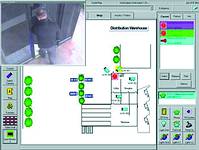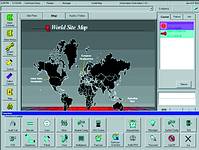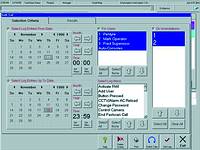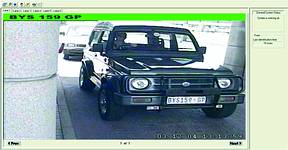

Surveillance has come a long way in the past five years. There are a plethora of companies offering you integrated solutions ranging from an HTML Iink into an embedded system all the way to high profile ‘open architecture’ PC-based solutions. This is all offered under the banner of PC-based solutions but what is it that you actually need and how far are you prepared to go with your new security solution.
The security market is notorious for its variety and number of people claiming to do the amazing. We see month after month a never-ending supply of stories highlighting the features and benefits of a Pandora's box of tricks which will fool the hardiest of clients. There are those suppliers who claim to have amazing features from point-of-sale, multiples of more than 16 cameras in one DVR, numberplate recognition, smart search facilities, realtime frame rates, on board access control with time and attendance, and it goes on and on. There is nothing wrong with all of the above, however, when these features interfere with the functionality, stability and its key role of providing you with a clear playback picture then their additional features can be questioned. Remember, the key role of a DVR is to capture quality images, give you the ability to store these images and most importantly to see a clear playback so that it can be used for evidence or integration into other applications.

What is pertinent to you - be it JPEG, Wavelet or MPEG 4 compression - is to ask some key questions. Most importantly it is to see for yourself the playback quality irrespective of frame rate or the other 'bells and whistles'. Check and see why some suppliers are taking the more rational route of providing the client with quality compression algorithms based upon JPEG or Wavelet? Consider why frame rates seem to take centre stage at present when the client would rather have a clearer playback than a realtime series of indistinguishable shots? The answer is in what you, as the client, are prepared to believe and the fact that often you do not look around at what is available and do not ask the questions regarding the most important aspect of all - show me the playback and let me see what I am getting.
Sadly we have seen many clients supplied with systems that are price based, promising the fastest frame rates but when it comes to playback they cannot identify the individual or cannot see the registration number! What was the point in actually purchasing that system?

Where are we today?
It is apparent among the market leading suppliers that the most effective global frame rate at the moment conforms to 16 channels of video running at 100 fps, or approx 4-6 frames per input depending upon the system chosen. The choice in these systems has been for quality recordings at quality resolution; remember that the faster your frame rate through a standard motherboard and its components the more you will need to compromise on resolution. Yes, there are ways around the bandwidth restrictions and a number of high end systems will give you 25 fps per channel at the highest resolution but then your price is well over R100 000 as each channel is running on its own virtual personal computer.
So what of the PC-based solutions on offer today? The choice is yours as there are probably more than 2000 different DVRs available locally. What is the difference between each of them and what should you be looking for? Well this is the crux of the matter. Integration is the current buzzword but what you need to consider is being able to choose 'best of breeds' within the budget you can afford. If you only have a small amount to spend then please purchase a capture card, low quality camera and understand that the replays you will see will show you that something happened, but little more.
What has been the driving force of PC-based solutions is the ability to link into other options; to be able to dial in remotely, to be able to access information and play it back on any other PC, to be able to link a playback to a particular access time, to be able to integrate what I have now into what appears next month, next year or in years to come. The most important point regarding this has been the development of the embedded systems to provide similar integration with great success. However, PC-based systems still remain a step ahead with their ability to often integrate to anything with a similar code as long as they have not adopted proprietary strategies. What does this all mean? Simply that by utilising proprietary strategies you are effectively locked into that particular supplier and need to be confident that they can supply a total 'best of breed' package. If there are better products available within a specific area then your consideration needs to be for open architecture solutions giving you the ability to move forward at your pace of integration and with the products that will give you the best result.

What is the future?
PC-based surveillance will go a very long way in the next five years. However, our immediate problem is bandwidth. Icasa needs to consider removing the restrictions currently presented within our local market which allegedly means that the telecommunications companies make huge profits at the expense of our ability to access the information we want and need. IP is the 'new kid on the block', but as you add more cameras, so your frame rate and recording abilities deteriorate over a specified bandwidth. You may therefore well need to record the information on-site and pull it across as and when you can or pay for an increased bandwidth option. This is why integration has become the buzzword that it is. You can identify a key event through access or biometric or whatever exception then you only need to pull across and save that relevant information according to that event and thus saving on bandwidth.
The answer that most suppliers are providing as a result of the above is to link to some form of centralised management system. In many cases if the system is proprietary then you will find the management is also proprietary. Those companies that have chosen to run with open architecture solutions providing HTML, Java script or even remote SDKs, are giving you, the client, the choice of value add. Rather than adding more and more extras on to the DVR and thus giving you one more item that may well end up crashing your system, look at choosing a combination of modules that will provide redundancy and give you backup options should something go down. We all know that the information we save on our computer today can so easily disappear through a virus regardless of operating system, so we must ensure that our chosen system provides stability and the means of giving you a backup. The future can be rosy if you ask the right questions and compare the answers you are being given.

Conclusion
PC-based solutions will continue to dominate the market for the foreseeable future. The clever use of integrated 'best of breed' products will allow you to get the best results according to the nature of the best trigger; providing quality recordings from linking to access control, RFID, biometrics, automatic number plate recognition or any other chosen exception running into a management software solution that allows prompt, measurable and specific reaction according to the event.

© Technews Publishing (Pty) Ltd. | All Rights Reserved.